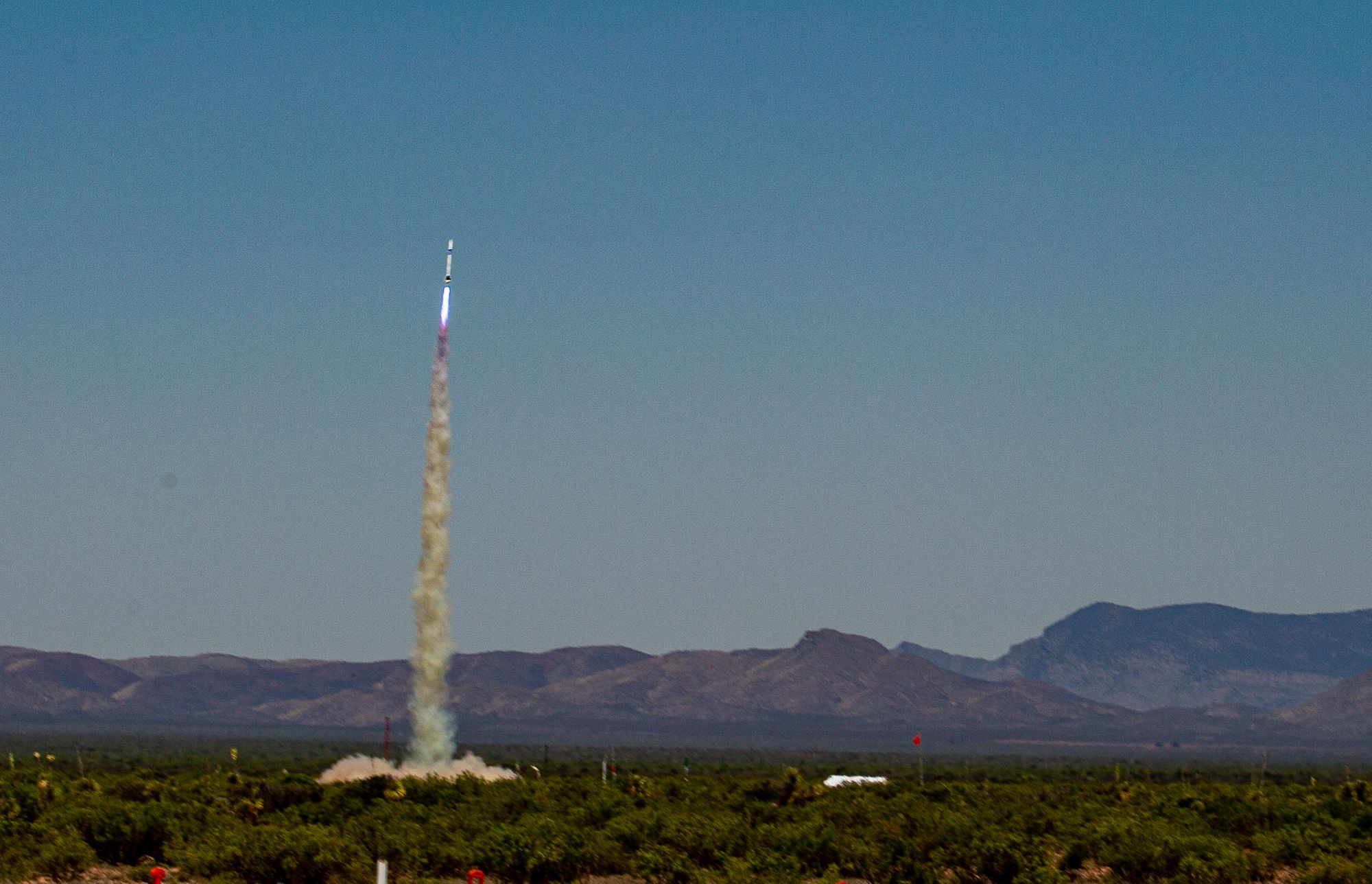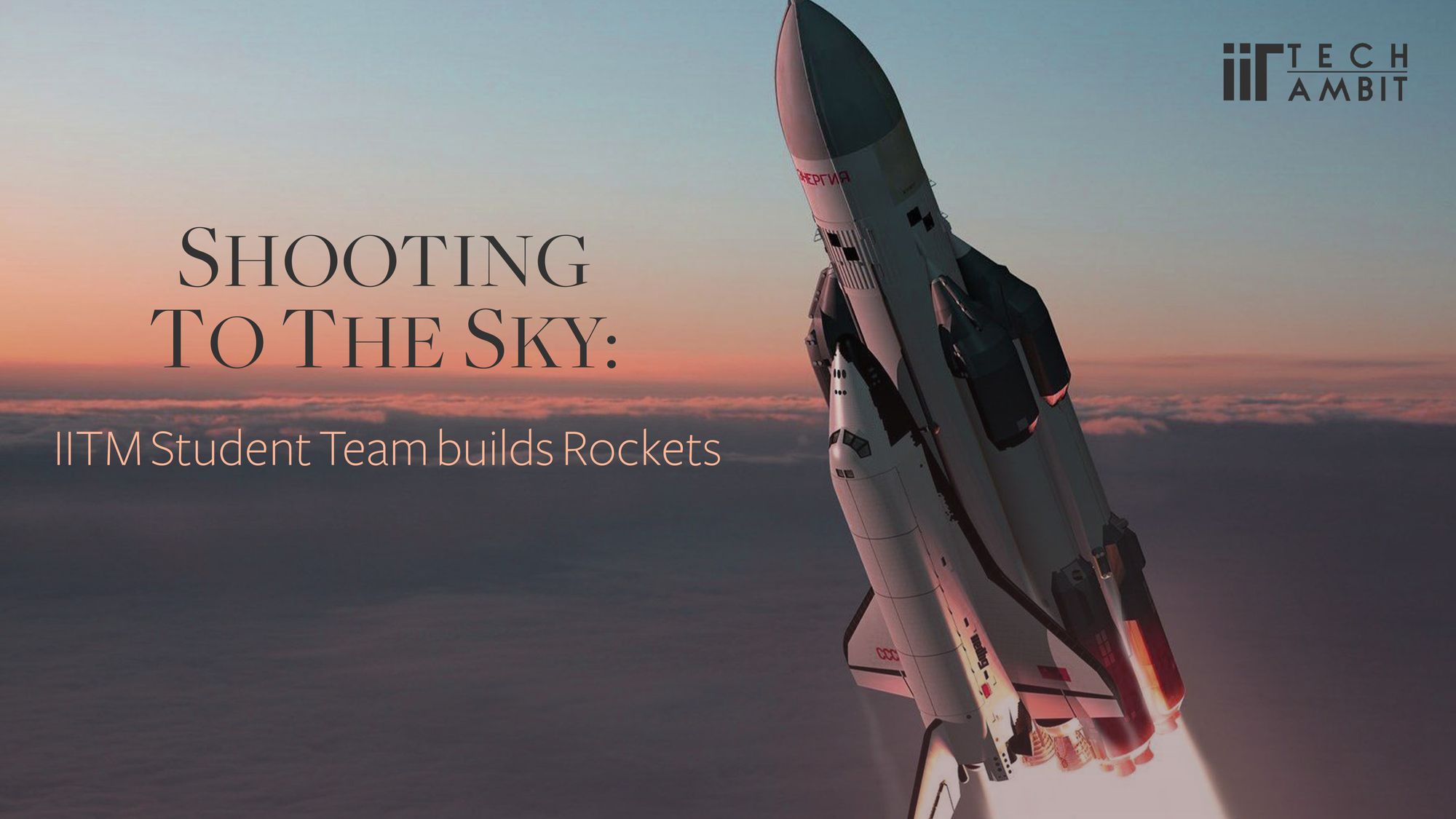Let’s agree we all look in awe when we see something goes soaring in the sky. No matter how old we are, it’s a natural instinct to gaze into the open sky and have a short moment of childish joy at the sight - if there’s a streak of jet behind it it’s even better. It could be an evolutionary behaviour, for the sky represents our ambitions and the horizon the limit of humanity.
Of course this is just a tale of an archaic era since humans started shooting to the sky over half a century ago, increasing our foothold in the universe one step at a time. But still, this leap happened within our lifetimes which is exactly why we still look with wonder when a rocket roars up into the horizon - be it the Indian workhorse PSLV or the flashy Falcons of SpaceX.

Desi amateur rockets
Okay coming back to the topic, there's nothing quite like Model Rocketry to attract spaceflight to the masses. Since the term 'Rocket Science' itself appears to be so interesting that there’s a very few who wouldn't want to get a sneak peek at it.
Model Rocketry sounds amazing because of its mis definition of building and flying rockets 'ready to launch.' We normally think about that odd bottle rocket we pumped up using water during our childhood. However the original concept of it revolves around rocket modeling at a mini scale and its subsequent designing, launching, and manufacturing.
Model Rockets in India at best are crude versions upgraded from diwali rockets which use black powder charge to propel and have cardboard casing. The better ones use a more refined ammonium perchlorate composite as fuel and have ‘Sack-Kraft’ paper rolled into tubes for casing which is used in premium paper bags and is difficult to tear under pressure.
Again these rockets don’t have an accurate flight path and can cause premature explosion of the fuel with the operators sometimes suffering from first degree burns to fatal accidents.
Planning the flight
It is exactly with these notions in mind that Team Ather - a group of 25 students from IIT M plans to compete in the Spaceport America Cup - the world's largest Intercollegiate Rocket Engineering Competition for student rocketry teams from all around the world.
The purpose built spaceport is located in the Jornada Mountain Range of New Mexico which sees student rocketeers fire their rockets to unprecedented heights every year.
Team Ather’s rocket named ‘MockingJay’ is ambitious in design as well as the technology it integrates. Conceived as a collaboration between Horizon - the physics and astronomy club - and the Electronics Club of IITM, the rocket is classified as a suborbital sounding rocket capable of carrying a payload of around Kg.
Sounding rockets are generally speaking one or two-stage solid propellant rockets used to sample the upper atmospheric regions. They also serve as easily affordable platforms for testing or proving prototypes of new components or subsystems intended for use in actual spaceflight.
“We wanted to set the bar high and that’s why we decided straight on to venture into the competition arena so that we can push ourselves against competent models from across the globe” says Rahul Priyadarsan, the head of Horizon. “ The preliminary design report was accepted but however Covid-19 situation has scuttled our plans”.
He also adds that although disheartening, the pandemic opened up much time for deliberation and with the competition schedule pushed to 2022 the team is now collaborating with the Surat based startup STAR Research Laboratory to onboard the training process of the team members. “It’s very unpredictable given the pandemic situation, there’s no way we can meet each other but we hope things go as planned” sighs Rahul who is also annoyed by the online semester planned out in IITM.
The rocket’s airframe is composed of fibre-glass and uses 3D printed modules for quick assembly. Unlike conventional model rockets which use solid fuel propellant, this 30kg beast uses liquid propulsion to go up. This gives the rocket a significant advantage for the fact that the entire flightpath can be moderated using an onboard computer.
The Electronic Club of IITM is simultaneously designing an electrical avionics system to be integrated into the rocket which regulates the various components it picks up from the flight data, ultimately steering the rocket into its predesignated path. This is mostly an arduino microcontroller component specialised to record various components of flight like altitude, speed, orientation etc, and to execute crucial decisions like controlling the burn as well as detecting the apogee to launch the recovery parachute.The computer runs a high speed control loop, prioritizing separate functions depending on the progress of the flight and the corresponding flight data is crucial for further modifications and tinkering of the rocket.
After the rocket reaches an altitude of 10,000ft it fires up the parachute for a safe recovery of the same. With speed exceeding Mach 1, the entire flight duration of the rocket is less than 2 minutes.
The team is also looking for an external partnership for the scientific payload component atop the 20ft airframe, which can carry various instruments for multitude purposes not limited to aerial photography and atmospheric calculations.

Reaching more heights
“Ultimately we only aim to apply what we have learnt in classrooms, it’s always challenging to convert theory into a real world application” reminds Rahul. He hopes that a positive experience from New Mexico will give them the much needed break. The team looks on to potentially expand into a competition team under Centre for Innovation (CFI) of IIT M, which can directly translate to increased funding opportunities including relevant industry sponsorship.
Rahul has great plans for the future, including expanding the rocket to cross 30,000ft and enhanced capabilities like thrust vectoring. Thrust vectoring is a real game changer for the fact that it almost blurs the difference between sounding rockets and actual ones capable of spaceflight.
Essentially this means one can control the direction of the thrust, ejecting out of the rocket engine, which is mainly achieved through controlling the fuel injection and movement of the engine in a rotary axis. Now the rocket would no longer need external fins for avionics, and it can slowly ascend and build speed, instead of leaving your sight in seconds. Also these models are more stable given the fact that the onboard flight computer can directly manipulate thrust to achieve proper velocity and orientation.
Unlike the West, India lacks an ecosystem where similar enthusiasts can come together and launch their own amateur rockets, which not only gives a real world learning environment but also a good way to release some adrenaline.
The team looks to create an ecosystem within the campus at minimum. “ A rocket launch is an awesome sight, we hope to attract the public and maybe one day a public display of the launch as well”, hopes Rahul.

